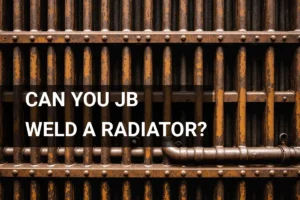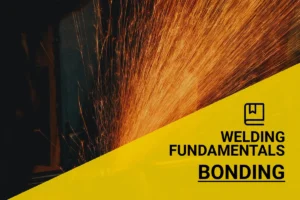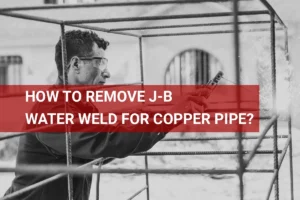How to Make J-B Weld Dry Faster? Tips, Methods, and Precautions
Published on: March 24, 2025 | Last modified: March 4, 2025
By: Mark Carter
J-B Weld is a strong epoxy adhesive. It’s used for bonding, filling gaps, and repairs on metal, wood, plastic, and more.
You may ask, how to make j-b weld dry faster? It’s essential to discover this because drying time can impact your project. In my experience, waiting too long can lead to setbacks, especially when you’re in a hurry to finish something.
In this guide, we’ll cover several key topics: types of J-B Weld, prerequisites to consider, steps to speed up drying, precautions to take, factors affecting drying time, common issues, and aftercare tips. You’ll also learn about the benefits and applications, alongside some alternatives. So, get ready to dive deeper into how do I make jb weld dry faster?
Contents
- How to Make J-B Weld Dry Faster?
- What is J-B Weld?
- Types Of J-B Weld
- Prerequisites to Keep in Mind
- Precautions
- Steps to Make J-B Weld Dry Faster
- Understanding Chemical Reactions in J-B Weld Drying
- Methods to Speed Up Drying
- Factors Affecting J-B Weld Drying
- Common Issues
- Aftercare, Inspection, and Advanced Tips
- Top Benefits You Can Expect
- Applications You Should Know About
- Exploring Alternatives
- Frequently Asked Questions (FAQs)
- Conclusion
- Additional Reading
How to Make J-B Weld Dry Faster?
J-B Weld is a strong epoxy adhesive. To make J-B Weld dry faster, increase warmth to about 27°C (80°F) or use a heat lamp, cutting cure time down to 1-3 hours. It can be tricky, but works well for repairs.
What is J-B Weld?
J-B Weld is an epoxy adhesive known for its strong bonding properties. It sets in 4 to 6 hours and achieves maximum strength in 15 to 24 hours. This product can withstand temperatures up to 550°F (288°C) and resists chemicals, including gasoline and water. J-B Weld can bond materials like metal, wood, and ceramic, making it ideal for repairs.
Want to speed up J-B Weld’s drying time? Keeping the bonded area warm helps. Just remember to follow the manufacturer’s guidelines for the best results.
It came in handy when I needed to fix a leaking pipe. I was pressed for time and thought about how to cure J-B Weld faster. By warming the area a bit, I managed to speed things up and get back to work without delay!
Types Of J-B Weld
-
J-B Weld Original
This classic epoxy works on metal, wood, and more. To speed up curing, store it in a warm spot, avoiding direct sunlight. Aim for about 24°C (75°F) for quicker drying. Higher heat can reduce set time to 4-6 hours instead of the usual 15-24 hours.
-
J-B Kwikweld
KwikWeld is a fast-setting formula for quick repairs. For faster results, apply heat right after mixing the two components. A heat gun can cut cure time to about 4-6 minutes, perfect for urgent fixes.
-
J-B Highheat Weld
This type withstands high temperatures up to 260°C (500°F). To speed drying, keep the application area warm while curing. This helps achieve a full cure in about 12 hours under optimal heat conditions.
-
J-B Marineweld
MarineWeld is designed for water-related fixes and is waterproof. Slightly heating it in a water bath before application speeds setting time. You can achieve a stronger bond within 4-6 hours instead of the usual 24 hours.
-
J-B Plasticweld
This formula is for plastics, and its flexibility is a key feature. To speed drying, keep it in a warm room or near a gentle heat source. A consistent temperature of 20°C (68°F) can help it fully set in about 15-30 minutes.
We have now covered various Types of J-B Weld. Next, we will examine important Prerequisites to Keep in Mind.
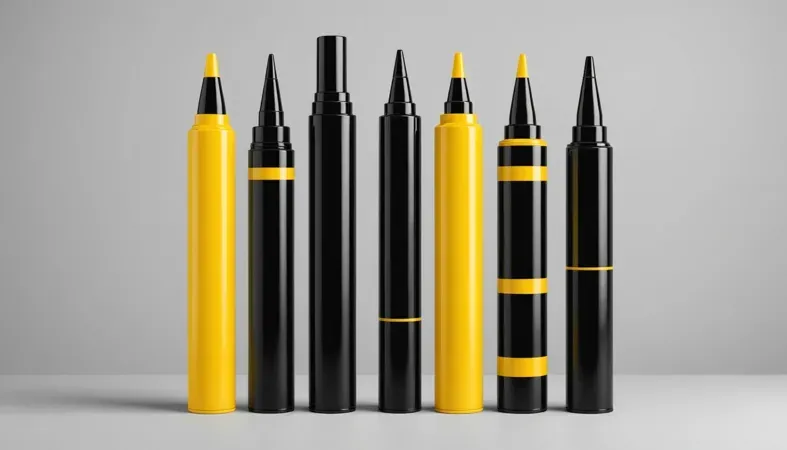
Prerequisites to Keep in Mind
What do you need to get started?
- Heat Gun: You’ll need a heat gun, like the Wagner HT1000. It applies targeted heat to the J-B Weld, reducing cure time from 4-6 hours to 30-60 minutes.
- Thin Plastic Wrap: You’ll need thin plastic wrap, such as Glad Cling Wrap. It retains moisture and promotes quicker curing by preventing air exposure.
- Timer: You’ll need a timer, like the TimeFlip 16. It accurately monitors the curing time for optimal results.
- Isopropyl Alcohol: You’ll need isopropyl alcohol (91% or Higher). It effectively cleans surfaces, ensuring a strong bond and optimal drying time for the J-B Weld product.
That covers essential prerequisites to consider. Let’s now take a look at important precautions to observe.
Precautions
Let’s quickly review vital safety precautions for J-B Weld use.
- Ventilate: Good airflow helps avoid harmful fumes; use a fan like the PIVOT Hurricane.
- Temperature Control: The ideal temperature is 60°F to 80°F (15°C to 27°C) for best curing. Keep your workspace warm.
- Drying Time Checker: Use a timer to avoid early handling; I recommend a 4-hour wait time.
- Safety Gear: Wear gloves and goggles for protection; I use 3M™ safety glasses.
Remember, prioritizing safety makes a significant difference!
So far we covered safety measures for using J-B Weld. Next, let’s look at how to expedite the drying process.
Steps to Make J-B Weld Dry Faster
Here are actionable steps to speed up J-B Weld curing time.
-
Heat the Bonded Area
Apply moderate heat to the area with J-B Weld. Ideal temperatures range from 38°C to 82°C (100°F to 180°F). Use a heat gun or hairdryer, keeping it about 10-15 cm (4-6 Inches) away to avoid damage.
Achieving precision in welding requires understanding the nuances of working with different metal thicknesses, especially when learning how to weld thin metal.
Warming the surface speeds up the chemical reaction and helps achieve a stronger bond. After applying heat, let it cure to ensure effective setting.
-
Increase Ambient Temperature
Raise the temperature in the room where you’re using J-B Weld to around 21°C to 27°C (70°F to 80°F). Close windows, use space heaters, or work in a heated garage to create a warmer environment, which can significantly reduce curing time.
When I worked in a cooler garage, the J-B Weld took twice as long to cure. Keeping things cozy makes a real difference for quicker results.
-
Use a Fan for Airflow
Enhancing airflow can speed up drying. Set a fan near the work area to help evaporate moisture that may interfere with curing. Moving air aids in surface curing and sets the bond quicker, but ensure it’s not too strong to disturb the repair!
This step often gets overlooked. A simple fan helps without heavy investment and results in faster J-B Weld drying time.
-
Thinly Apply J-B Weld
Apply J-B Weld in a thin layer where possible. A thinner application allows heat and air to penetrate better, speeding up bonding. Thicker layers take longer to dry. Aim for a layer less than 3 mm (1/8 Inch) thick. The skillful application of welding techniques such as B Pressure welding ensures the integrity and strength of the bonds involved. For more information, see the detailed guide on B Pressure welding fundamentals.
I learned the hard way that globbing it on won’t yield good results. A smooth, even layer achieves a quicker cure and stronger hold.
-
Skip Excess Mixing
Mix only the amount of J-B Weld needed for the job to save time. Mixing too much epoxy won’t cure as fast due to chemical excess. Stick to a ratio of about 3 parts resin to 1 part hardener as per the instructions for a proper bond and reduced curing time.
I often mixed extra out of habit, but learned it changes how quickly it sets. More isn’t always better with epoxy!
We have now covered methods to expedite J-B Weld drying. Next, we will examine the chemical reactions involved in its drying process.
Understanding Chemical Reactions in J-B Weld Drying
To grasp how to make J-B Weld dry faster, it’s vital to understand the chemical reactions involved during curing.
| Factor | Effect on Cure Time | Recommended Temperature |
|---|---|---|
| Heat (Thermal Activation) | Increases reaction rate, reducing curing time by up to 50% | 21-38°C (70-100°F) |
| Humidity | High levels slow reactions; aim for low humidity for better results | 30-50% Relative Humidity |
| Mixing Ratio | Improper ratios may hinder curing speed; follow directions closely | 3 parts resin to 1 part hardener |
| Surface Preparation | Clean, rough surfaces yield better bond strength and faster curing | N/A (ensure surfaces are dry) |
| Thickness of Application | Thicker layers take longer to cure; keep it below 3 mm (1/8 Inch) | Less than 3 mm (1/8 Inch) |
Understanding these factors helps you control the environment. By ensuring you’re using optimal temperatures and maintaining proper surface conditions, you’ll maximize the effectiveness of J-B Weld and significantly speed up drying time.
Methods to Speed Up Drying
Let’s explore ways to speed up J-B Weld drying. We’ll discuss heat application, accelerators, thin application, environmental control, and using a fan.
-
Heat Application
Applying heat to J-B Weld can speed up the curing process. Using a heat gun or placing the application in a warm spot may reduce drying time by up to 50%. Just don’t exceed 150°F (65°C) to avoid damaging the bond.
-
Use Of Accelerators
Adding a curing accelerator can significantly speed up J-B Weld’s drying time. Some allow the epoxy to cure in as little as 1-2 hours instead of the usual 4-6 hours. Be cautious with the amount; a little goes a long way!
-
Thin Application
Applying J-B Weld in a thinner layer helps it cure faster. A 1/8 inch (3 Mm) layer dries up to twice as fast as a 1/2 inch (12.7 Mm) layer. I learned this lesson the hard way when I used too much on a project and had to wait a long time!
-
Environmental Control
Controlling the surrounding environment can make a big difference. Keep the area warm and dry. A temperature of around 70°F (21°C) and low humidity significantly speeds up curing time.
-
Using a Fan
Using a fan to create airflow over the drying J-B Weld can effectively reduce curing time. A gentle breeze lowers humidity and promotes faster evaporation, noticeably cutting drying time. Just remember to keep the fan at a safe distance!
Factors Affecting J-B Weld Drying
What factors influence the speed of J-B Weld curing? Let’s find out.
-
Ambient Temperature
Temperature affects chemical reactions. J-B Weld cures faster at higher temperatures; for instance, at 21°C (70°F), it sets in about 4-6 hours, while at 32°C (90°F), it can cure in just 2-3 hours.
-
Humidity Levels
High humidity can slow curing. When humidity exceeds 60%, moisture interferes with the bonding process, resulting in a tacky finish that takes longer to set.
-
Thickness Of Application
Thicker applications take longer to dry. A thin layer of J-B Weld can cut curing time significantly, speeding it up by several hours compared to thicker applications.
-
Airflow
Increased airflow speeds up drying. When air circulates around the bond, it facilitates evaporation, helping J-B Weld cure faster by reducing moisture levels on the surface.
-
Surface Material
The type of surface matters, too. Porous materials like wood or concrete allow the adhesive to cure faster than non-porous materials like metal, which retain moisture and slow the process.
Common Issues
Let’s examine specific issues with J-B Weld.
-
Incomplete Curing
J-B Weld may take too long to cure due to temperature. Check the hardened surface; if it feels soft or tacky, curing is incomplete. Apply heat with a heat gun (Not Over 150°F or 65°C) to speed up the process.
-
Weak Bond Strength
Weak bonding can occur if surfaces weren’t prepped. If it peels away, the bond is weak. Clean materials with acetone, then roughen surfaces. Reapply and clamp to ensure maximum strength.
-
Cracking or Shrinkage
If J-B Weld develops cracks after curing, it may be due to uneven application. Check for gaps or irregularities. Thicker layers can sometimes prevent this issue.
-
Surface Contamination
J-B Weld can fail if the surface is oily or dirty. If it appears to fail, clean it with acetone. Always verify the area you’re bonding.
-
Adverse Temperature Effects
J-B Weld struggles in extreme temperatures. If you notice deterioration, check for damage from high heat or freezing. Avoid these conditions during curing; room temperature (Around 70°F or 21°C) is ideal for using J-B Weld.
Welding galvanized steel requires precautions due to the risk of zinc fumes, which can be hazardous to health. It’s critical to understand the safety measures needed to prevent exposure to toxic elements when welding galvanized steel. Consider the important factors and potential hazards involved by reviewing welding galvanized steel safety.
Aftercare, Inspection, and Advanced Tips
Here are essential aftercare, inspection, and advanced tips for using J-B Weld effectively.
Aftercare Tips
After mixing J-B Weld, keep the temperature above 15°C (60°F) to ensure a proper cure. If you’re applying it in colder conditions, wrap the item in a blanket for insulation. Avoid direct water contact for at least 24 hours for optimal bonding.
Inspection Techniques
Inspect the bond surface 24 hours after application for any cracks or moisture in the joint. Use a flashlight for visibility; joints should appear even and smooth. If you’re using a generic product like Loctite Epoxy, check for stability by applying slight pressure on either side.
Expert Tips
If you have experience, consider using an infrared heat lamp to speed up the curing process. Position it about 12 inches (30 Cm) away from the J-B Weld application. You can also mix smaller amounts of J-B Weld for quicker curing and start prepping your surface in advance to properly engage oil-based surfaces.
Top Benefits You Can Expect
The main benefit of knowing how to make J-B Weld dry faster is saving time. It helped me when I needed a quick fix for a leaking pipe.
Additionally, faster drying means you can resume your project sooner. It also minimizes wait time for repairs, allows for quicker assembly of parts, and enhances overall efficiency.
Applications You Should Know About
I’ve known people who use J-B Weld for various repairs. It has many applications, such as:
- Aerospace Repairs: It’s used for quick fixes on aircraft components due to its high strength and heat resistance. It’s popular among hobbyists and professionals!
- Masonry Restoration: J-B Weld speeds up the repair of stone and brick structures. It’s crucial for maintaining structural integrity in time-sensitive situations.
- Automotive Exhaust Repairs: It effectively seals leaks in exhaust systems. This speeds up repairs, helping you get back on the road faster.
- Marine Repairs: It’s perfect for underwater repairs on boat hulls. Quick application means less downtime and more time on the water.
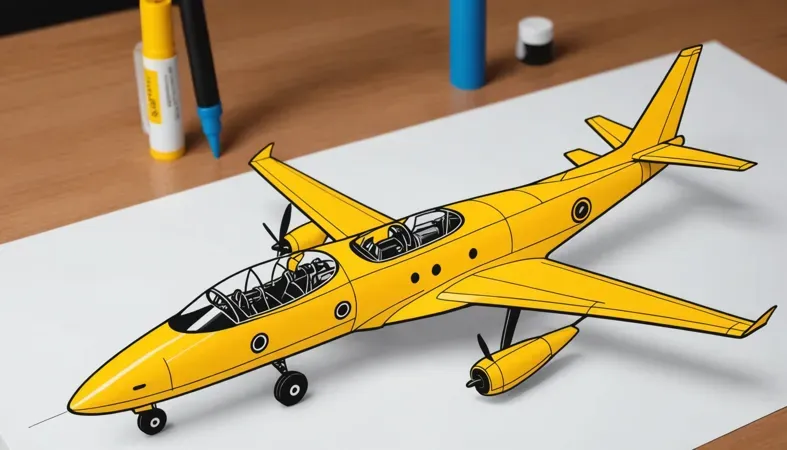
Exploring Alternatives
Consider using J-B Weld Quick-Weld for faster results. It cures in just 4-6 minutes. This product works well when you need a quick bond, like in emergency repairs or small projects.
If you’re looking for extra speed, try a heat gun. Apply low heat at around 150°F (65°C) to help the curing process. Just make sure to keep it moving to avoid damaging the bond.
Frequently Asked Questions (FAQs)
Now, let’s look at the common questions I typically get asked about J-B Weld.
Does Heat Help J-B Weld Dry Faster?
Yes, heat helps J-B Weld dry faster. Heating J-B Weld while it’s curing can increase the temperature, which accelerates the chemical reaction and speeds up the setting time. A common method is to use a heat lamp or a heat gun set to a low temperature of around 38°C (100°F).
How Long Does It Take J-B Weld to Dry?
J-B Weld typically takes 4-6 hours to cure at room temperature. Complete strength is usually reached in 15-24 hours. Factors like temperature and humidity can affect these times, so adjust your expectations based on your environment.
Can You Apply a Second Layer Of J-B Weld?
Yes, you can apply a second layer of J-B Weld. It’s best to wait for the first layer to fully cure before adding the next one. This ensures proper adhesion and can help prevent future cracking, as the layers bond better when cured separately. If you ever need to reverse the bonding process, it might be useful to understand how to remove welds.
How Do You Soften J-B Weld?
You can soften J-B Weld by applying heat. A heat gun set at a lower temperature can help rework the cured material. Typically, keeping the temperature below 149°C (300°F) prevents damage to the underlying materials or structures.
What’s the Best Temperature to Cure J-B Weld?
The ideal temperature to cure J-B Weld is between 21°C and 38°C (70°F to 100°F). Curing at room temperature is fine, but warmer conditions can speed up the process, resulting in faster bonding and increased durability.
Conclusion
That brings us to the end of our guide. We covered the basics of J-B Weld, its types, prerequisites, and steps to make it dry faster. We also discussed precautions, methods to speed up drying, factors that affect drying time, common issues, and aftercare tips.
To wrap it up, if you want to know how to make J-B Weld dry faster, pay attention to the environment. Keeping it warm (Around 70°F or 21°C), using thinner layers, or even gently heating can all help. Wishing you success in your welding projects as you employ these strategies.
For additional insights and resources on welding, feel free to visit What is Welding.
Additional Reading
- Lincoln Electric. (2020). The Procedure Handbook of Arc Welding (15th ed.). Cleveland, OH: Lincoln Electric Company.
- International Organization for Standardization. (2017). ISO 3834: Quality Requirements for Fusion Welding of Metallic Materials. Geneva, Switzerland: ISO.
- American Welding Society (AWS): https://www.aws.org
Mark is a skilled welding engineer specializing in advanced metal joining technologies and process design. With a formal education in welding engineering and a background rooted in practical experience, Mark bridges the gap between theory and application. He is passionate about making technical concepts accessible, empowering welders to embrace innovation while mastering essential skills. Mark combines his scientific expertise with a commitment to supporting the welding community alongside his uncle, Joe.
American Welding Society, Bonding, Drying Techniques, Epoxy Adhesive, J-B Weld, Metal Thickness, Project Efficiency, Repair Tips, Structural Integrity, Welding, Welding Techniques



